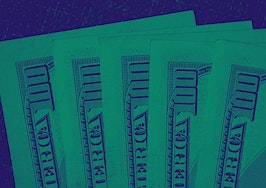With the industry and the market changing faster than ever, make plans to come together with the best community in real estate at our flagship event. Join us at Inman Connect New York, Jan. 24-26, and punch your ticket to the future. Check out these just announced speakers for this must-attend event. Register here.
Homesellers are losing what remaining edge they had as mortgage rates climb above 6 percent, alienating all but cash-buyers and the truly blessed.
The four-week period ending Sept. 11 boasted a 2.9-month supply of homes on the market, up from a supply of just one month during the same period a year prior. The surge in inventory marks the highest level of housing concurrently on the market since June 2020, according to an analysis by Redfin released Thursday.
The rapid climb in supply illustrates how sellers have lost their grip on the market as mortgage rates tick upwards and many buyers find themselves priced out of homeownership.
“Homebuyers have more power than they’ve had since the ‘before times,’” Redfin Deputy Chief Economist Taylor Marr said in a statement, referring to the years before the coronavirus crossed shores into the United States. “Unfortunately, it’s increasingly hard for buyers to make use of their newfound power thanks to the affordability pressures of rising mortgage rates and a dearth of homes being listed for sale.”
Although the market is regaining balance, it’s still by no means a buyers’ market due to sustained price growth and some homesellers simply bowing out in the face of high mortgage rates, Marr added.
“A true buyers market would have more homes for sale than there are buyers, with a wide variety of homes for sale by style, price, and location,” Marr said. “So when a buyer finds the home that matches their preferences they face little competition and can offer under asking price with healthy inspection and financing contingencies in place. Today’s average buyer is paying less than the list price, but they continue to struggle to find a home that meets their criteria and budget.”
Mortgage rates reached 6.01 percent this week for the first time since 2008 after hovering between five and six percent for several months. Their current highs are a far cry from the lows of roughly three percent where they started the year, with the current rates representing roughly double what they were a year ago. Rates fell slightly during July and August amid fears of a recession but have ticked back upwards
The Federal Reserve is expected to raise interest rates by 0.75 percent when it meets next week. While mortgage rate increases do not necessarily mirror the Fed’s interest rate increases, they do tend to directly influence them.
Despite rates rising, demand for mortgages increased, with mortgage purchase applications increasing 0.2 percent week over week for the week ending Sept. 9.













